A Pioneer Car Ferry on the Bass Strait

![]() Abel Tasman discovered Tasmania during his epic exploration voyages of 1642 and 1644, noting that the Eastern Highlands of New South Wales stretched for around 200 miles and continued down parts of Tasmania. Tasmania or Van Diemen’s Land was administered as part of New South Wales until declared a separate state in 1856. In the 1840s and 1850s, several individuals such as George Ward Cole ran single small paddle or screw steamers across the Bass Strait, but they always folded their service as uneconomic after a brief period of time. James Crookes set up the Launceston Steam Navigation Company in October 1852, which ran for just over four years until dissolved in 1857, with the Launceston-Melbourne Steam Navigation Company (George Fisher and partners) taking over the crossings of the wild Bass Strait with a fleet of four steamers.
Abel Tasman discovered Tasmania during his epic exploration voyages of 1642 and 1644, noting that the Eastern Highlands of New South Wales stretched for around 200 miles and continued down parts of Tasmania. Tasmania or Van Diemen’s Land was administered as part of New South Wales until declared a separate state in 1856. In the 1840s and 1850s, several individuals such as George Ward Cole ran single small paddle or screw steamers across the Bass Strait, but they always folded their service as uneconomic after a brief period of time. James Crookes set up the Launceston Steam Navigation Company in October 1852, which ran for just over four years until dissolved in 1857, with the Launceston-Melbourne Steam Navigation Company (George Fisher and partners) taking over the crossings of the wild Bass Strait with a fleet of four steamers.

End, Newcastle on 15th December 1958.
The first of two companies called the Tasmanian Steam Navigation Company was set up in 1845, only to cease trading in 1851. A second company of this name was set up in 1853 and lasted much longer, until in 1891 it was taken over by the tentacles of the ‘Southern Octopus’ of the Union Steamship Company of New Zealand (USSNZ) for £200,000. The Tasmanian Steam Navigation Company had services from Sydney and Melbourne to Launceston, an inland port of the river Tamar on the north coast of Tasmania, and Victoria Dock in Hobart, and from Melbourne to Strahan on the west coast of Tasmania, Burnie and Devonport on the north coast, and brought with it no fewer than eight steamers plus several coal hulks that were stationed at suitable ports. In 1889, James Huddart of Huddart, Parker Ltd. entered Bass Strait sailings with two vessels that normally operated as colliers but were able to carry 150 First Class passengers with a further eighty as steerage in the holds.
The competition between the two great rivals of the USSNZ and Huddart, Parker Ltd., led to the formation of a jointly owned company in December 1921 as Tasmanian Steamers Pty Ltd. for a Melbourne to Hobart service. Loongana of 2,448 grt with accommodation for 382 passengers in two classes, a Denny product of 1904, and Oonah of 1,757 grt began the service for USSNZ on 1st January 1922 along with Nairana of 3,547 grt completed in 1917 for Huddart, Parker Ltd. The larger twin funnelled Taroona of 4,286 grt came from the Clyde yard of Alexander Stephen and Sons Ltd. in March 1935. She had her large topsides accommodation built of special quality steel, with an electrically welded rudder, and was propelled by six steam turbines with steam raised in three Yarrow boilers. She had accommodation for 483 passengers in two classes with a crew of 85, and a cargo capacity of 53,135 cubic feet. More importantly she could carry a small number of cars, laboriously lifted on and off by crane with slings under each wheel.
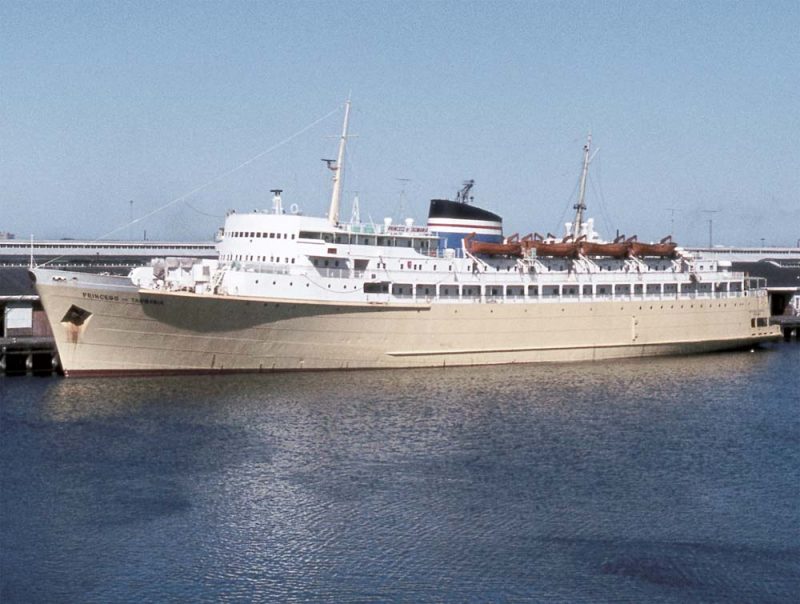
By the 1950s, more and more Australians wanted to drive their own cars for tours of Tasmania, and the first pioneer drive on ferry in the Southern Hemisphere was launched as the Princess of Tasmania at the State Dockyard at Newcastle (NSW) on 18th December 1958. The passenger ferry was bedecked with flags as she slid down the ways with a crowd of thousands cheering the proceedings. The State Dockyard had been set up in 1942 to build warships and continued building stout ships for 45 years until closed down in 1987. The Australian National Line (ANL) had been formed on 1st January 1957 after the Australian Coastal Shipping Corporation had been formed two months previously to operate a fleet of forty ships, with State protection for the next twenty years on the important Bass Strait route from Melbourne to Devonport, a port further to the west of Launceston. The arrival of the Princess of Tasmania ended the USSNZ passenger services from Australia to Tasmania with Taroona withdrawn along with the cargo ship Tatana built in 1955.
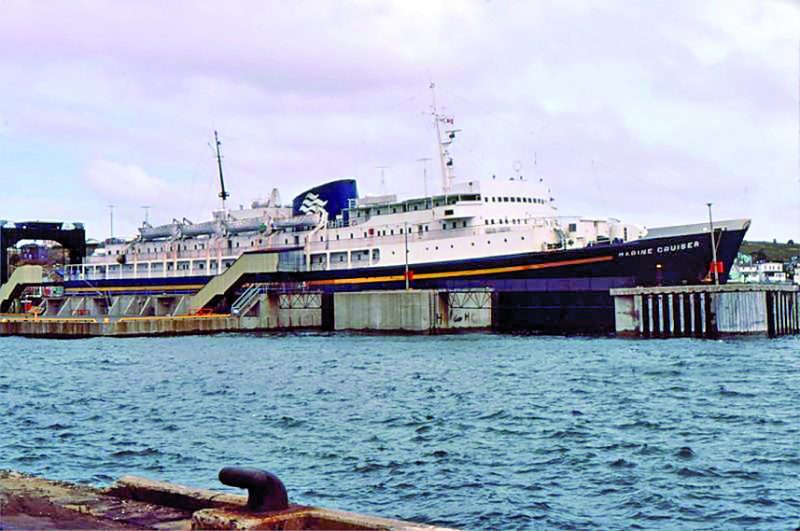
Princess Of Tasmania
The vessel was laid down on 15th November 1957 for ANL and launched thirteen months later and arrived for the first time in Melbourne on 21st September 1959. She made her maiden voyage on the Bass Strait on 23rd September 1959 with one hundred invited guests to Devonport, and began her service to Devonport on 2nd October 1959 from Webb Dock at Melbourne. She had dimensions of 371.8 feet in length, moulded beam of 58.2 feet, depth to Upper Deck of 36.3 feet, and a draft of 15.6 feet. She was measured at 4,619 grt and was a twin screw diesel driven car and passenger ferry with one car deck extending from her stern almost to her bow, arranged with a large hinged door at her stern to allow 142 cars, or combinations of cars and trucks, to enter and exit. She had overnight accommodation for 334 passengers, of which 178 were berthed in cabins on the Promenade Deck and Lower Deck, and the remainder on aircraft type reclining seats in the Lounge.
The Public Rooms consisted of an Observation Lounge and a Cafeteria seating eighty passengers on the Upper Deck. The ship’s officers were accommodated in single berth cabins provided on the Navigating Bridge Deck, with the crew housed aft. The vessel was fitted with Denny-Brown stabilisers and a Voith-Schneider propeller in her bow to help with berthing the vessel. The main propelling machinery was twin Nohab nine cylinder M69TS diesel engines by Nydquist and Holm A/B of Trollhattan in Sweden of a total output of 9,340 bhp at 250 rpm to twin propellers to give a maximum service speed of 17.75 knots and cruising speed of 16.0 knots. Electric current was supplied from four auxiliary Ruston generators rated at 400 to 450 kilowatts. The vessel, at the time of her launch, was the largest merchant ship built in Australia. The flare of her bow created an overhang on both the starboard and port forward enclosed parts of the Promenade Deck, and her yellow hull with red boot topping contrasted well with her white upperworks, cream masts, and deep blue funnel separated from a black top by two white and one red thin bands.
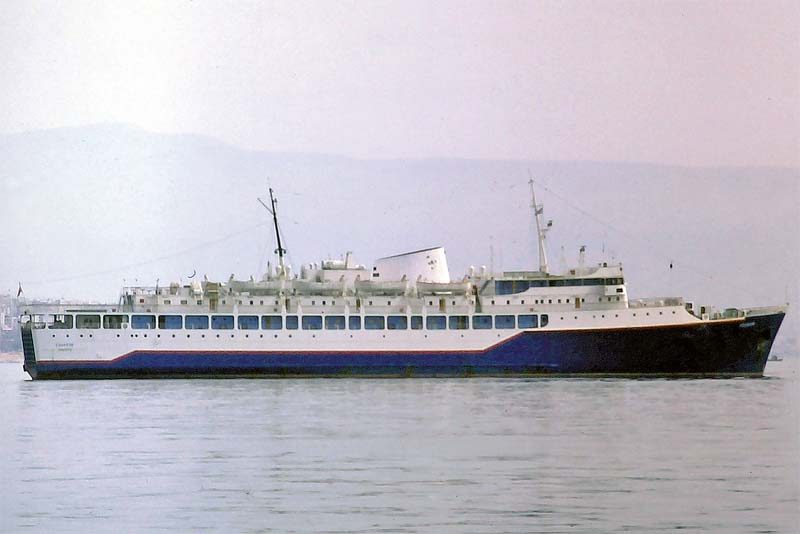
Prior to entering service, Princess of Tasmania called at Sydney (NSW) on 24th July 1959 for media publicity reasons for the ‘New ANL Ro-Ro Searoad Service’ between Melbourne and Devonport. ANL was a forward thinking shipping organisation that knew that future profits lay with radically different ro-ro and container ships, but this was not in tune with the traditional attitude that Australians had with their ships. The ‘Apple Isle’ as Tasmania was known on the mainland needed much better and faster communications for cars and trucks. Princess of Tasmania ran alone across the Bass Strait three times per week each year except for her maintenance period during August and September. She carried in her first year of service some 64,836 passengers, 16,978 cars and 7,808 commercial vehicles and trucks, a very good start indeed.
Princess of Tasmania quickly gathered a loyal following, referring to her affectionately as ‘POT’. The black hulled freight ro-ro Bass Trader of 1,655 dwt carrying forty trailers and 72 TEU of containers joined her in 1961 as part of the ‘ANL Searoad Service’ with a weekly call at Launceston, Devonport and Burnie from Melbourne. However, for ten years the ‘Princess’ was the main passenger ro-ro until she was joined by the much larger passenger ro-ro Australian Trader of 7,005 grt and 3,425 dwt carrying 190 passengers, 110 cars plus combinations of trailers and containers, also built by the State Dockyard at Newcastle (NSW).
In 1972, the Australian Trader was transferred from the Melbourne to Devonport run to the Sydney to Hobart run, and the larger passenger ro-ro Empress of Australia moved from the Sydney run to the Bass Strait run. The ‘Empress’ had been built in 1965 by the Cockatoo Island Dockyard at Sydney for a service from the Sydney terminal at Mort’s Bay (Balmain) to Hobart via Devonport and Burnie. The ‘Empress’ had accommodation for 250 passengers, seventy cars, seventy containers and twenty trailers (or 91 cars and sixteen large trucks), and had a service speed of 17.5 knots from M.A.N. diesel engines. However, profits eluded her, and she was given another two hundred aircraft type reclining seats to take more passengers for her transfer to the Bass Strait run.
Princess of Tasmania made her last voyage on 28th June 1972 to Melbourne from Devonport, and was then retired from her pioneer run for which she had generated much business in July 1972 and offered for sale. The ‘Princess’ sailed away from Australia for ever on 7th October 1972 after being sold to Bahamarine Ltd. of London for charter to the Ministry of Transport in Ottawa. She worked on the Eastern Seaboard of Canada from North Sydney to Port aux Basques, and gained her first change of name in 1975 to Marine Cruiser with her hull now black. During 1976/77, she worked the Yarmouth (NS) to Portland (Maine) route.
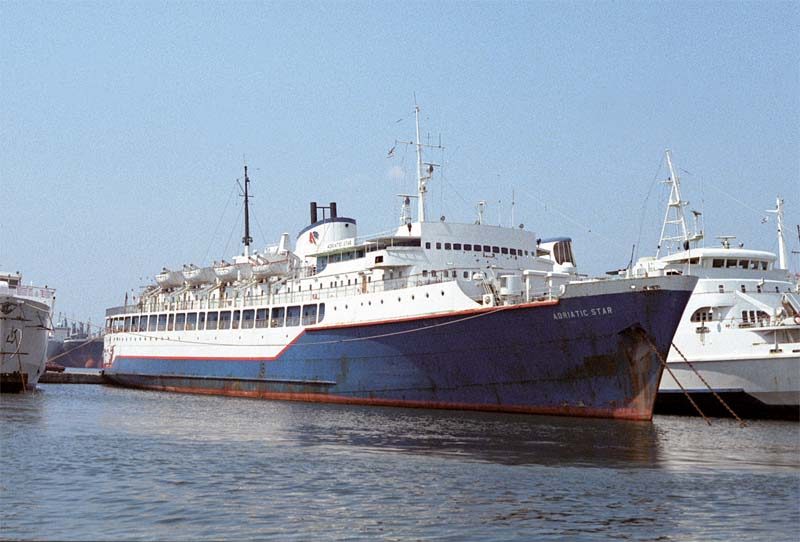
In January 1984, she crossed the Atlantic to work in the Mediterranean tourist trades, first as Majorca Rose for Dolphin International Shipping Company of Valletta from Port Vendres (South West France) to Alcuida (Majorca), then as Equator for Equator Shipping Co. Ltd. of Valletta, then as Nomi for Progress Marine Ltd., Valletta, and then as Adriatic Star for Adriatic Ferries between Patras, Igoumenitsa, Corfu and Ancona. She was sold again in 1988 to become Lampedusa for Traghetti del Isole of Trapani with a yellow and white hull for the route from Trapani to Ustica and Civitavecchia, before becoming a white hulled Muslim pilgrim ship from Suez to Jeddah from 1991 to 2005 under the names of Shahd Fayez, Al Mahrousa and Tebah 2000. The latter name was her tenth in 46 years and the name under which she arrived for breaking up on 30th March 2005 at Alang in India.
By comparison, in 2005 when the ‘Princess’ was broken up, the Bass Strait run from Melbourne to Devonport was run by the chartered big ‘Superfast’ ferries, Spirit of Tasmania I and Spirit of Tasmania II, sisters of 29,338 grt, each with accommodation for 1,400 passengers, 650 cars and forty trailers, a very big increase in size! In the intervening years from 1985 to 2002, two further large passenger ro-ros had operated on the Bass Strait in Abel Tasman of 12,528 grt with accommodation for 919 passengers on four deck levels and 234 cars, and in Spirit of Tasmania of 31,360 grt with accommodation for 1,294 passengers and 550 cars and 118 trucks or 300 cars and forty large trailers. The latter ferry currently runs the Newcastle to Ijmuiden passenger run as Princess Seaways along with another of her four sisters as King Seaways.
Tasman Tt-Line
ANL withdrew from the Bass Strait passenger service in 1985, and the Australian Government funded the setting up of the Tasman TT-Line to run this service as compensation for not allowing the Tasmanian Government to build a hydro-electric scheme on the Gordon river. TT-Line is owned by the people of Tasmania and is operated by a Board of Management that reports directly to the State Government. The first two passenger ferries came from TT-Line of Germany, this is a coincidence in name only, the first was Nils Holgersson built in 1975 by the Nobiskrug yard in Rendsburg in Germany for the Travemunde to Trelleborg service.

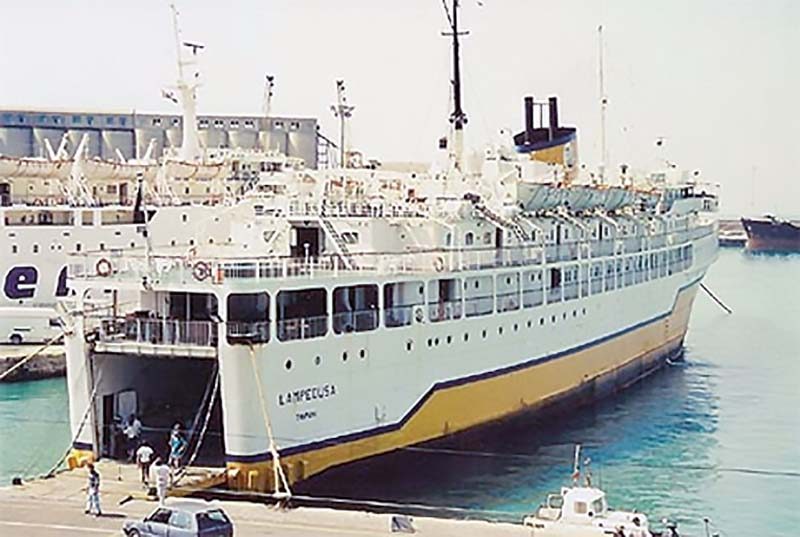
Nils Holgersson went back to her builders for the addition of a large box like structure aft for the crew, because the Australian Maritime Union rules do not allow for the crew to be housed in the original under car deck accommodation. She left the Rendsburg yard on 22nd April 1985 but two days later she was stopped by an industrial dispute with the shop stewards. She was forced to berth at Kiel, with police sent from the Tasmanian Government to resolve the dispute but they were powerless under West German law. A change in Tasmanian law finally solved the dispute a month later, and she arrived from the Baltic on 1st June 1985 at Melbourne and was renamed Abel Tasman after the Dutch explorer. She made the fourteen hour crossing three return times per week at her service speed of eighteen knots.
The Abel Tasman passengers could choose from de-luxe suites, two and four berth cabins, or hostel accommodation, and the facilities of Abel Tasman included three restaurants, swimming pool, sauna, shops, live entertainment in her lounge, a mini cinema and full medical service. Abel Tasman performed well for eight years before being sold in 1993 to Ventouris Ferries of Greece and renamed Pollux for an Adriatic service from Igoumenitsa in Greece to Bari in Italy. In 1995, she was sold to NEL Lines or the Maritime Company of Lesbos and renamed Theofilos for their principal Lesbos service from Piraeus to Chios, Mytilini and Thessaloniki.
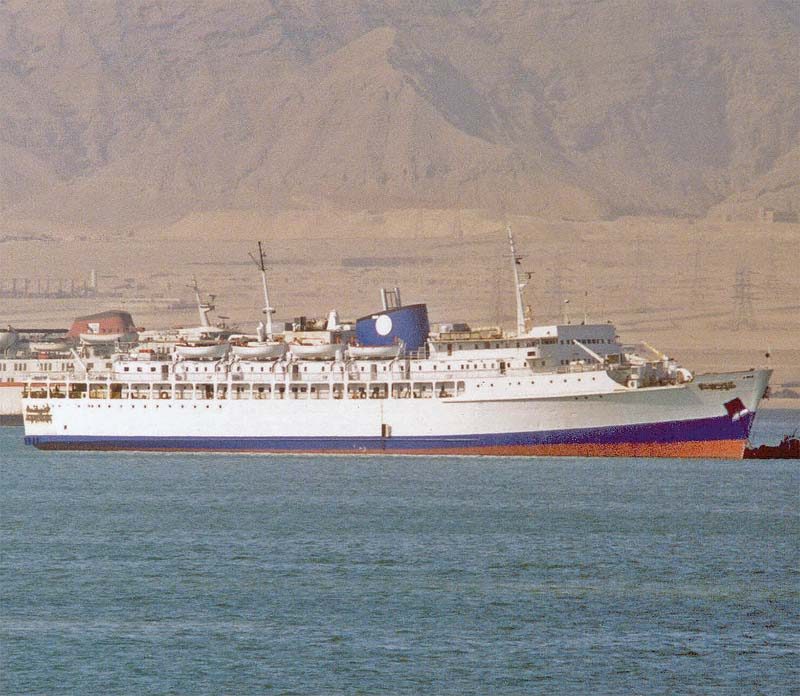
Abel Tasman was replaced in 1993 by one of the next generation of TT-Line of Germany passenger ships in Peter Pan of 31,360 grt, built in Bremerhaven in 1986 by Schichau Seebeckwerft A.G. for the Travemunde to Trelleborg service. She has a bow door/ramp and two stern doors/ramps, is ice strengthened, has a lane length of 1,410 metres with a car deck clear height of 4.5 metres, and is propelled by four MaK eight cylinder diesels of a total of 26,646 bhp to give a service speed of twenty knots. The public rooms included dining rooms, bars, fast food and buffet service, cafeterias, shops, conference room, a casino and other amenities that made life comfortable for her 1,294 passengers on her four return crossings per week. Spirit of Tasmania completed her intended ten years of service at the end of 2002, and was then sold to Norwegian owners and chartered to Fjord Line of Bergen under the name of Fjord Norway. This Fjord Line service lasted four years until she was sold in 2006 to DFDS of Denmark and renamed Princess of Norway for a Tyne to Stavanger, Haugesund and Bergen route, a year later changing to Tyne to Ijmuden service, and changing her name in 2011 to Princess Seaways, her current name. One of her sisters, Nils Holgersson, joined her on this route as King Seaways in 2011, having been on English Channel service as Val de Loire for Brittany Ferries between 1993 and 2006, when she was sold to DFDS and renamed King of Scandinavia.
Spirit Of Tasmania I, II and III
Pericles S. Panagopoulos and his son Alexandros began planning in 1992 a fleet of a dozen ‘Superfast’ passenger and freight ferries for international operation via their Attica Enterprises S.A. of Piraeus. Superfast I and Superfast II were put into service in 1995 on the Patras to Ancona route on a daily service with a voyage time of twenty hours. The pair had very fast service speeds of 26 knots and were completed by the Schichau Seebeckwerft yard at Bremerhaven in 1995 with accommodation for 1,400 passengers and 250 cars and lorries. Superfast III and Superfast IV were completed by Kvaerner in Finland in 1998 and also ran initially on the Ancona to Patras route, and between Igoumenitsa and Bari and Brindisi.
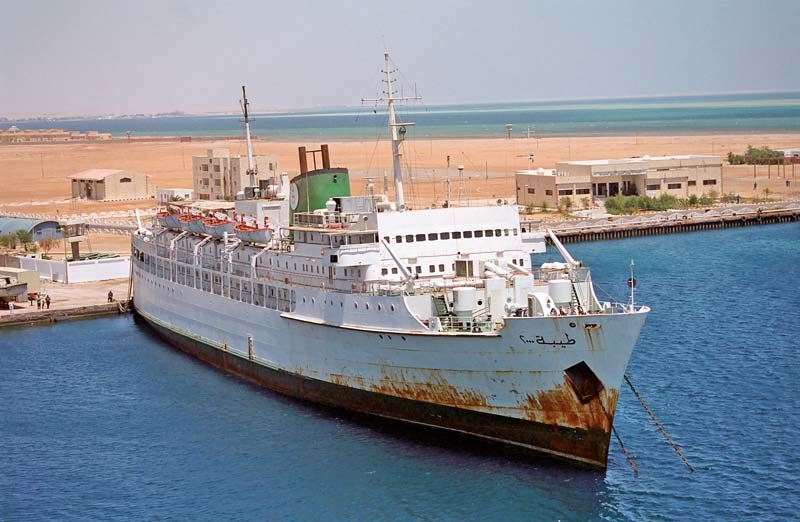
In September 2002, both the Superfast III and Superfast IV ferries replaced Spirit of Tasmania (ex Peter Pan) and were renamed Spirit of Tasmania II and Spirit of Tasmania I. They operated two return services on the Bass Strait each day, their high speed of 26 knots enabling a ten hour crossing. They offer high quality berthed cabins and aircraft style reclining seats in lounges for their passengers, and dinner, light snacks or breakfast are offered from restaurants and four bars. Television is available in all public rooms, with also a casino, a cinema, children’s playroom and shops and tourist information facilities. This extra passenger capacity doubled the number of passenger berths crossing the wild but beautiful Bass Strait.
A third iconic red and white ‘Superfast’ ferry with a maximum speed of 30.8 knots was introduced to the Sydney to Devonport service as Spirit of Tasmania III in January 2003. This was one of the original pair of ‘Superfast’ ferries in Superfast II, and made the long voyage between Darling Harbour at Sydney and Devonport in only 22 hours. This Sydney to Devonport service was initially a success financially, but a reduction in international tourists and a rate war with the airlines meant she was travelling at below half capacity. She was withdrawn in August 2006 and sold to run as Mega Express Four for Corsica Ferries, making the very long voyage back to the Mediterranean and arriving in September 2006. The Sydney to Tasmania route has had a very chequered history of short term operations over a very long period of 175 years.
Devil Cat Fast Craft
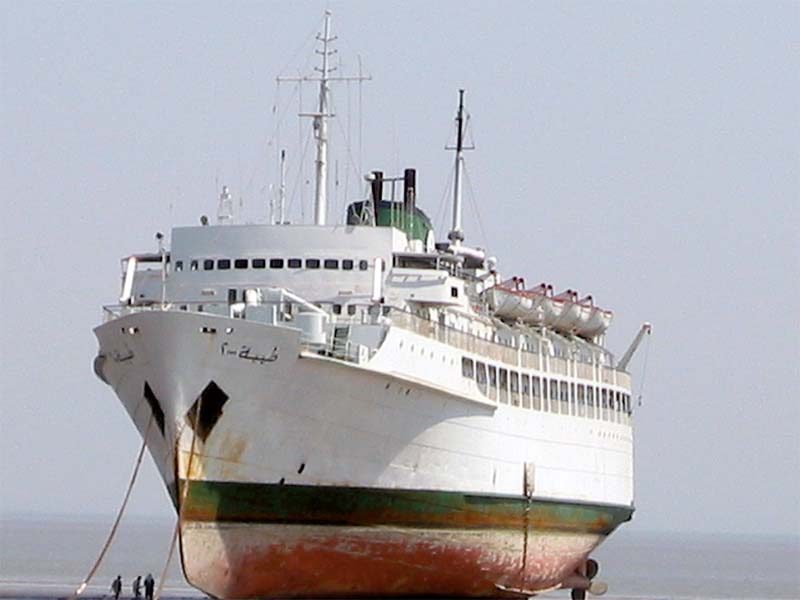
Fast craft operating at speeds of forty knots (44 mph) with frequent storms and high seas in the Bass Strait led to cancellation of many of the crossings of twin hull Incat 046, built in Hobart, and renamed ‘Devil Cat’ during her single season of operation in 1997. The fast craft operated between Melbourne and George Town at the mouth of the Tamar river leading inland to Launceston in conjunction with the original Spirit of Tasmania (ex Peter Pan) operating to Devonport. The six hour crossing was very unpleasant in the best of weather conditions to say the least during the six hour crossing, with many passengers violently seasick, and in 1998 she moved to the Maine route between Yarmouth (Nova Scotia) and Bar Harbour (Maine) for Bay Ferries. She then moved in 2002 to the Cook Strait crossing between Wellington and Picton for Interisland Line of New Zealand, and later between Port of Spain (Trinidad) and Scarborough (Tobago) as ‘The Lynx’. She still operates this mostly calm seas latter route today, under charter to the Government of Trinidad and Tobago.
Devonport In Tasmania
A good friend of mine, Chris Mills, first introduced me to this delightful Bass Strait ferry port in 2003. Chris served for six years in the British Merchant Navy during the 1960s before emigrating to own a sheep ranch near Port Huon in Southern Tasmania. Port Huon and nearby Hobart were regular ports of call for apples from the ‘Apple Isle’ and other cargo by Port Line ships. He knew Devonport well and often would send me postcards of the port and its Tasman TT-Line terminal on the Esplanade in East Devonport while I was publishing his excellent maritime seafaring story book entitled ‘A Tramp Skipper’s Luck’, a sequel to his ‘Beyond the Harbour Lights’.
Devonport has warm summers with average temperatures averaging between 20 and 28 degrees Centigrade and thus has the characteristics of a Mediterranean climate. In 1890, the twin settlements of Torquay on the east side of the Mersey river and Formby on the west side, were united by public vote and given the name of Devonport. The wharves at Formby were close to the railway and warehouses, and the Bluff Lighthouse was completed in 1889 to guide vessels into the Mersey and its narrow harbour.
The ferries that have operated from Devonport over the years to Melbourne as well as Sydney (NSW) have included:-
- Oonah 1922-1935
- Loongana 1922-1935
- Nairana 1922-1948
- Taroona 1935-1959
- Princess of Tasmania 1959-1972
- Empress of Australia 1972-1986
- Abel Tasman 1986-1993
- Spirit of Tasmania 1993-2002
- Spirit of Tasmania I 2002-Present
- Spirit of Tasmania II 2002-Present
- Spirit of Tasmania III 2002-2003
Today, SeaRoad Shipping operate two freight ro-ros between Devonport and Melbourne with a call at King Island in the Bass Strait. They are named Searoad Mersey after the river at Devonport, and Searoad Tamar after the river at George Town leading up to the port of Launceston. Exports from Devonport include cement products from Cement Australia at their Railton factory since 1926, tallow, wheat and formerly coal, while imports include petroleum, bunker fuel, fertiliser, gypsum and caustic soda. The Bass Strait Maritime Museum is well worth a visit, and is housed in the former Harbour Master’s House (built c1920) and the pilot office and has ship models, photographs and maritime objects that tell the stories of both the Bass Strait and Devonport.

Postscripts
The yellow hulled Princess of Tasmania was a pioneer passenger and freight ro-ro in 1959 on the Bass Strait and indeed in both Australia and New Zealand. She served the Bass Strait route well for thirteen years, before moving on to a have a further long career of 33 years in Canada, the Mediterranean and the Red Sea. She sailed from ports in Australia, Canada, U.S.A., France, Spain, Italy, Greece, Egypt and Saudi Arabia during her long 46 year career. The design of Princess of Tasmania had been inspired and evolved from ro-ro developments in England in the 1950s, with Lt. Col. Frank Bustard and the Bustard family and their Transport Ferry Service across the Irish Sea from Preston with twenty war built LSTs (Landing Ship Tank), as well as their new purpose built Bardic Ferry and Ionic Ferry in 1957/58 from the William Denny yard at Dumbarton. The Southern Region of the British Transport Commission had two car ferries in operation on the English Channel in Lord Warden of 1952 and Maid of Kent of 1959, both also from the William Denny yard.
The Americans were also in the forefront of ro-ro operation, with Searoad of Hyannis transporting trailers from Hyannis (Mass.) to Nantucket Island from 1956, followed a year later by the larger ro-ro Comet for the U.S. Military with stern ramps and interior ramps. The ro-ro and ro-pax concept now embraces thousands of ships in service around the world.
The present ‘Superfast’ ferries with service speeds of 26 knots can carry three times as many passengers in one day across the Bass Strait as did Princess of Tasmania in a whole week. Progress is paramount in a fast changing world, but memories remain of the handsome yellow hulled, twin masted, pioneer passenger ro-ro ferry Princess of Tasmania.





Comments
Sorry, comments are closed for this item